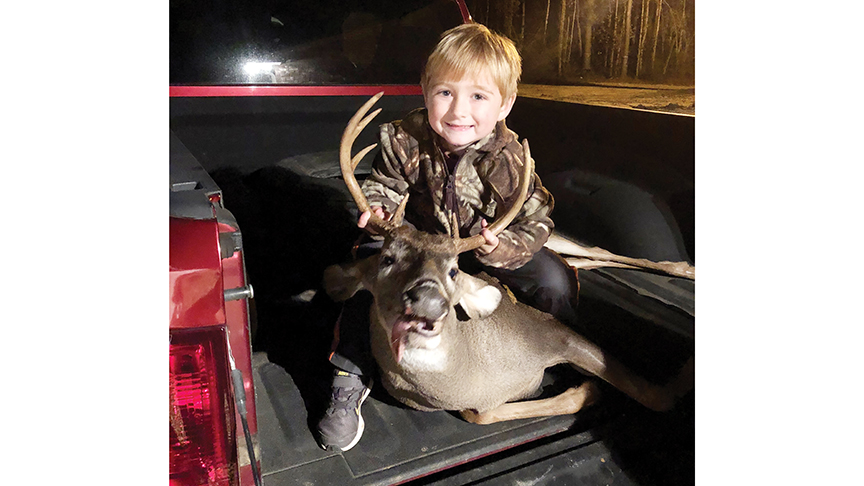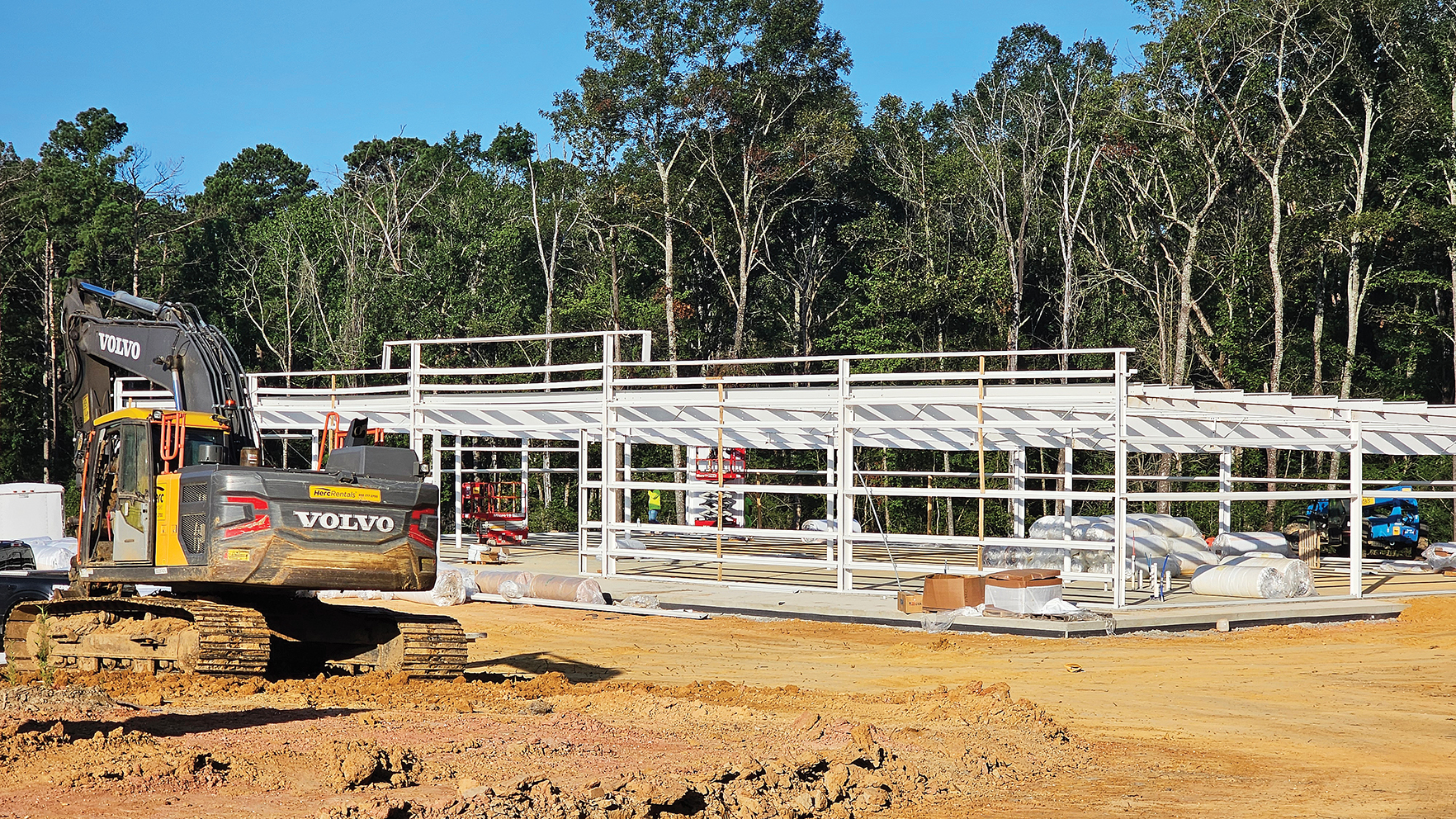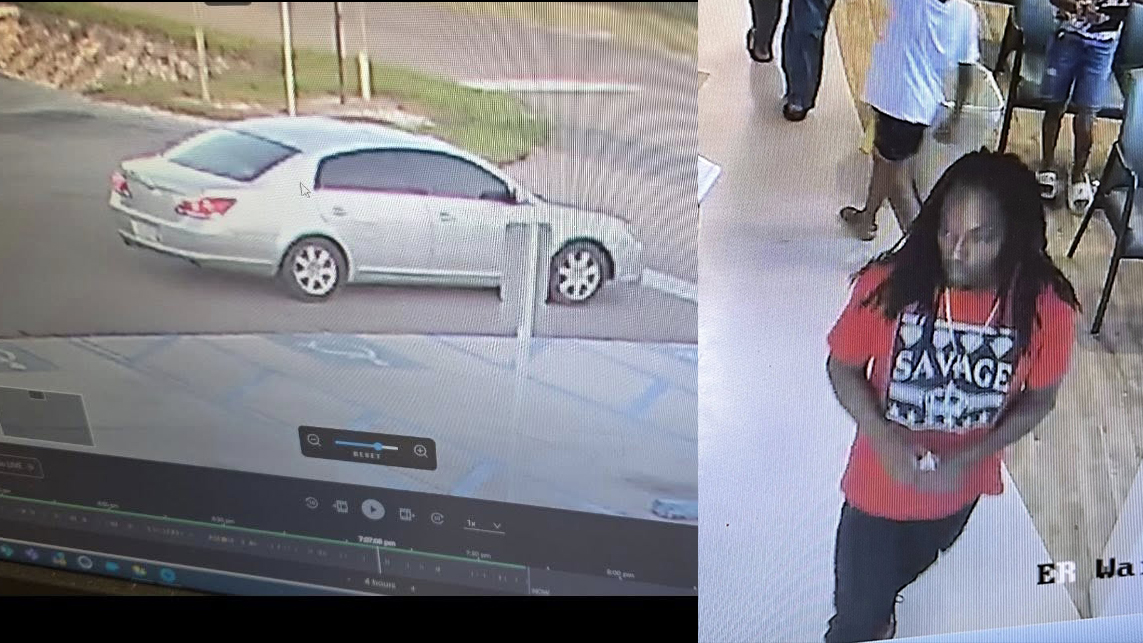Hunters needed to help manage state deer population
Published 9:06 am Thursday, October 17, 2024

- Photo submitted Bogue Chitto 5-year-old Shelton Hall killed his first deer, an 8-point buck, on Nov. 28, 2018.
BROOKHAVEN — An estimated 1.6 million deer inhabit MIssissippi according to the Mississippi Department of Wildlife. Licensed hunters harvested around 279,000 deer last season
William McKinley, MDWFP Deer Program Coordinator, said the harvest and population was the same as the season before.
It is remarkable considering Mississippi once had a statewide population of around 1,200 deer in the early 1900s. Thanks to the conservation work of Fannye Cook, a Crystal Springs native, hunters and the creation of the Mississippi Game and Fish Commission in 1932, deer populations began to rebound. It was not easy at first, deer had to be relocated around the state and intensively managed to allow the population to grow.
Trending
Deer restocking efforts continued until the 1960s. From the 1960s to the 1980s, deer production exponentially grew. Today, Mississippi faces a different management challenge. McKinley said he looks at the percent harvested of the population and the number has declined to around 14 percent.
“Over time, it appears when we harvest 20 percent of the herd it keeps the population level and 22 percent reduces the population. The last couple of years we have been around 14 percent,” McKinley said. “It suggests the population is increasing. Harvest has gone up but so has the population. I certainly realize this may not be true for every property but I’m looking at this as an entire state. This is why people have the choice on how many deer to harvest. It is a wonderful thing.”
There are simply not enough resources available and too many deer on the landscape to have a healthy herd. McKinley said complaints of deer mowing down flower beds and gardens in urban settings has ramped up. Deer can cause a lot of damage to vegetation because they need to eat one to two gallons of plant material a day.
McKinley said as deer populations increase the competition for food gets more intense and deer then resort to other foods low on preference. Eastern red cedar for example is a last resort food for deer.
He added while he has not seen herds of deer starving to death, data collected through the Deer Management Assistance Program, DMAP, shows body conditions are lower in quality.
“Deer are simply not as healthy as they could be. Weight and antler sizes are down,” McKinley said. “That tracks in the data as well as we are seeing slow declines. We know from research for each 10 pounds of body weight you get 7 to 9.5 inches of antler growth. Healthier does produce healthier fawns. Long term management is not an overnight fix.”
Trending
Hunters play a vital role in conservation and are needed to harvest more deer within the bag limit. According to MDWFP, the average hunter in Mississippi kills 1.6 deer a year. In order to have a healthy deer herd, hunters need to harvest one more deer within the bag limit.
McKinley said hunters happen to be the biggest management tools in the state. While his job title is Deer Program Coordinator and he manages the state herd, it is up to hunters to harvest deer to effectively manage the local populations as needed.
“I give management recommendations and ultimately it is the hunter who elects to take a shot or not take a shot,” McKinely said.
While hunters can make more food for deer through habitat management practices such as forest stand improvement, disking and prescribed fire, it is often site specific. Hunters can schedule a private land visit with MDWFP to learn and gain more insight about how to better manage their property for wildlife.
Deer are considered a keystone herbivore and impact a lot of different critters with their browsing.
“I want to make it clear. We are asking hunters to harvest an additional deer than they normally do within the bag limit. The average hunter is taking 1.6 deer, I want to see the number increase to over 2 deer,” McKinley said. “Help us manage this herd.”
Slow disease spread
One reason harvest is needed is to help slow the spread of diseases such as Epizootic Hemorrhagic Disease and Chronic Wasting Disease. EHD is caused by biting midges which can have a local mass mortality event but most deer in Mississippi have developed resistance to EHD.
CWD is a 100 percent, always fatal disease caused by an infectious prion. The neurodegenerative disease is found in deer and other members of the cervidae family.
CWD is spread in a couple of ways, one is by direct contact with infected deer and bodily fluids and indirect contact with CWD prions shed by infected deer into the environment. Prions are shed in bodily fluids such as blood, saliva and urine. Places where indirect contact can occur are scrapes and corn feeders according to research conducted at Mississippi State University.
Physical symptoms of CWD are often not visible until the late stages of the disease, 12 to 18 months after infection. Healthy looking deer can be positive for CWD and in Mississippi, a majority of positives have not been clinical or shown symptoms of CWD.
Hunters are urged to submit samples for testing to help surveillance efforts for the disease. The sooner CWD is found the more management options there are to fight the disease. The Center for Disease Control reports “To date, there is no strong evidence that CWD infects people. However, these experiments raise the concern that CWD may pose a risk to people. They show the importance of preventing people from eating CWD-infected deer.”
To date, there are 318 CWD positives detected in Mississippi across 16 counties. One of those counties with a positive is Harrison County just south of Pearl River County.
Hunters can visit MDWFP’s CWD page to see where the closest sample drop off cooler is located.
Lincoln County additionally has several participating taxidermists who can be found in a list of participating taxidermists on the MDWFP CWD page.
“We are working with more taxidermists than we ever have. There are even more ways to get deer samples and we encourage hunters to do so,” McKinley said. “Get out and hunt.”
Helping hand
Hunters can also help feed hungry Mississippians with their harvest. According to the MDWFP, Hunter’s Harvest is a program through the Mississippi Wildlife Federation where hunters can donate venison through participating processors in Mississippi. Lincoln County processors participating in Hunter’s Harvest include Boyd Deer Processing in Ruth, Diamond J and Knight’s Deer Processing in Brookhaven.
The donated meat is often distributed to local food pantries and food banks through the Mississippi Food Network.




